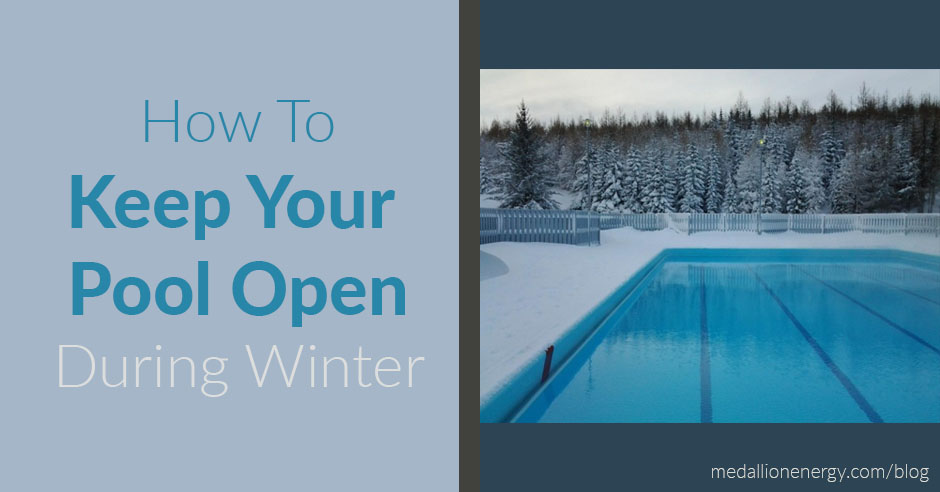Trying to keep your pool open during winter? Keep reading to learn how
If you’re reading this, then you’re probably deciding what to do with your pool in the winter. And you may even be wondering if you can keep your pool open all winter long.
That’s a question that tons of pool owners have when the cold weather comes around. So we’ll make it really simple:
Yes, you can keep your pool open during the winter.
How much you’ll be able to swim in it, and how much it’ll cost depends mostly on your location. But we’ll get into that shortly.
For now, let’s go over everything you need to know to know about keeping your pool opening during the winter months. From pros and cons, to what you’ll need and how much of it.
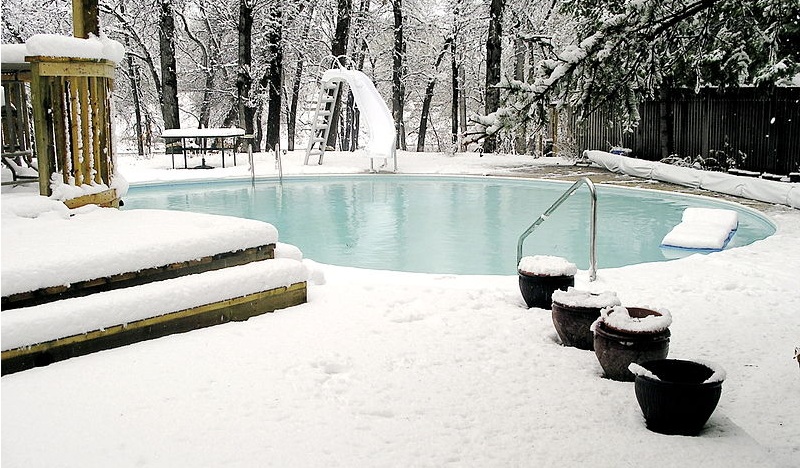


Reasons to keep your pool open during winter
- Extends your swim season
- With heated water, keeping your pool open during the winter means a longer swim season. That’s more time to relax, get in a few laps, and enjoy cookouts with family and friends
- Let’s you enjoy the view of beautiful water during winter nights
- Eliminates the need for a winter cover
- While you CAN cover your pool during the winter, you don’t have to in order to keep it open. Covering it periodically can help improve heat retention and cleanliness.
- No need to reopen the pool
- Not having to reopen your pool in the spring may be one of the biggest benefits of keeping your pool open throughout the winter. By keeping your pool open, you skip the reopening process altogether.
- No cleanup in spring
- At least half of the pool owners who close their pools in the winter, end up dealing with algae in the spring. And those who leave their pools uncovered typically have a bed of sunken leaves to answer to come spring.
- Keeping your pool open during the winter means hopping into a cleaner pool in spring
If you’re keeping your pool open during winter, consider:
- The average winter temperature where you live
- Pool owners living in the South and out West can easily extend their swim season into the winter
- Pool owners living in the North and colder climates can keep their pools open but may have restricted swimming time
- The cost to run your pump longer
- You’ll need to keep your water moving constantly whenever temperatures get close to the freezing point (32 degrees). This prevents freeze damage and protects your pool system, but it also means a bit more energy use
- Your budget
- While keeping a pool open during winter is fairly affordable, it’s still an added expense. Expect to spend a few hundred dollars in energy during the winter months.
- On the other hand, you’ll spend less on chemicals, since they last longer in colder temperatures.
- Your swimming habits
- IF you just want to keep your pool open to reduce spring cleanup and enjoy the view, that’s great. But if you’re an avid swimmer, keeping your pool open (and heated) during the winter makes it even easier to enjoy the water and keep up with your workouts
With that out of the way, let’s jump right into it. Keep reading to learn how to keep your pool open during the winter.
How To Keep Your Pool Open During The Winter
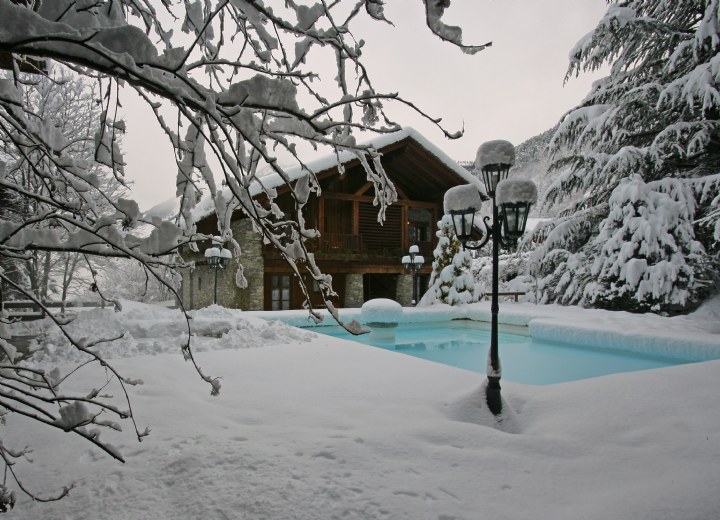


Step 1.) Keep your pump running 12-24 hours a day
Wondering how to keep your pool from freezing in the winter?
If you want to keep your pool open during the winter months, then you have to keep your pool pump running.
For how long?
As long as necessary. The point of running your pool pump in the winter is to keep your water moving, which prevents it from freezing should temperatures get too low.
So ideally, run your pump (and keep it running) whenever temperatures start getting close to 32 degrees Fahrenheit, the freezing point of water.
Of course, you’re probably not going to be standing by your pool all day with a thermometer. So how do you keep your pump running and prevent freeze damage while you’re away?
Step 2.) Install an automatic timer with freeze protection
An automatic timer is a solution for every pool owner who doesn’t want to constantly turn their pump on and off all winter. So basically, everyone reading this post.
Automatic timers with freeze protection turn your pump on and off for you, both on a schedule, and whenever temperatures reach a pre-set limit. They can also be installed to run your pool heat pump automatically too.
IF you’re keeping your pool opening during the winter, then getting an automatic timer is a smart investment. It’ll save you time, keep your equipment safe, and prevent freezing. What more could you ask for?
Step 3.) Keep your water warm and above freezing temperatures
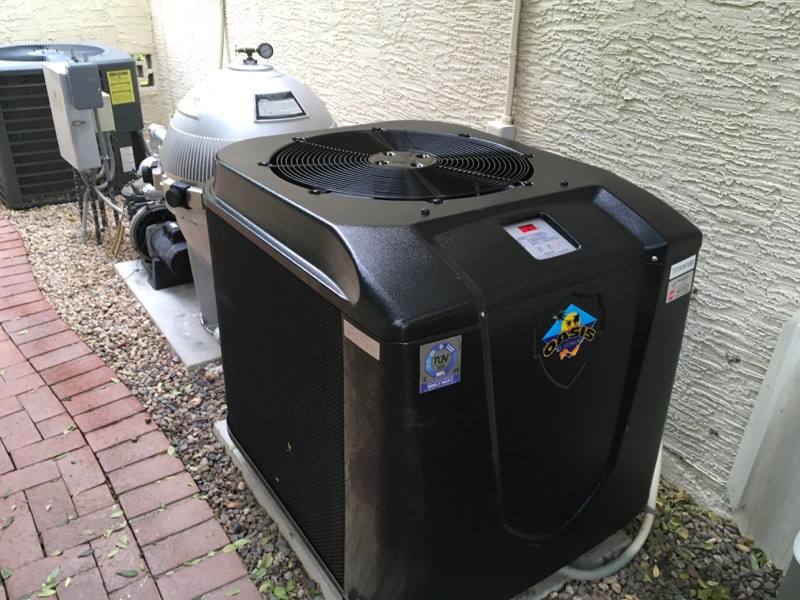


This is targeted more towards those living in colder climates. But it applies to anyone who wishes to extend their swimming season into the winter.
In some parts of the US, winters can reach temperatures below zero. In these areas, while solely running your pump will help prevent freezing, it won’t stop all of it. In these cases, we advise running your pool heater to keep your water in at least the 40s.
While it may not be warm enough to swim in, you’ll still be able to keep the pool open without having to worry about accidental damage.
But if you live somewhere with milder winters, then keeping your pool warm during the winter is a great way to extend your swim season. Even if your winters get as cold as 60 degrees, a pool heat pump can keep your water warm and swimmable.
Related: 9 Ways Owning a Pool Heat Pump Improves Your Health & Your Life
Step 4.) Turn off and winterize water features
Running your pump prevents freezing, and keeps water flowing throughout your pool system.
But your water features, like the fountain and waterfall are a different story. They usually run on their own pumps and set of pipes.
So unless you plan to also run your water features whenever you run your pump, it’s usually best to close the valves, turn them off, and keep them winterized.
Also, consider that features made out of mortar or stone can suffer from micro freezing whenever water gets into the smaller cracks and crevices.
Step 5.) Keep your valves open for proper flow
If you’re keeping your pool open during winter, then keep your valves open too. This is an absolute must for maintaining good water flow and avoiding any freeze damage.
The only time you should close your valves is if you happen to lose power (more on this later).
Step 6.) Maintain the pool to keep it clean
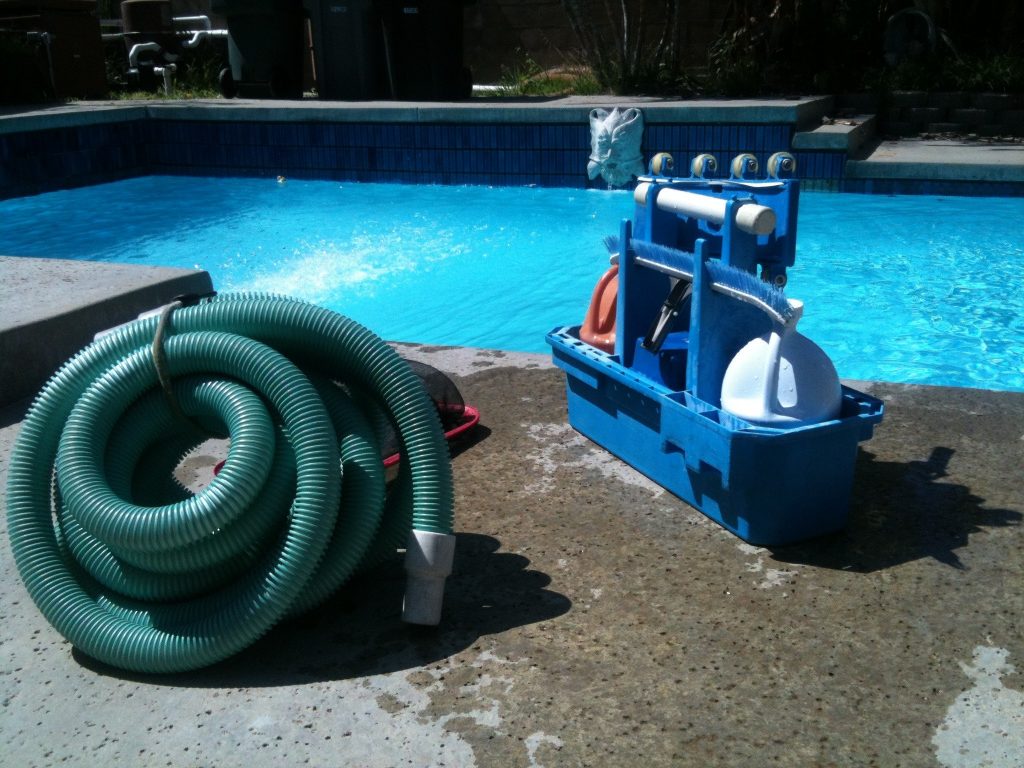


When it comes to pool maintenance, keeping your pool open in the winter is just like any other time of year. The water needs to stay clean and balanced.
Remember to:
- Skim your water at least 2-3 times a week
- Brush the walls at least 2 times a week
- Vacuum at least once per week
Even if your pool is left uncovered all winter long, your water should still look great if you keep up with maintenance.
(Don’t want to do all that work? Learn how to automate pool maintenance)
Step 6a) Turn off the salt generator, and switch to regular chlorine
If your pool uses a salt generator, then you’ll have to switch to regular chlorine for the winter months. Unfortunately, salt water chlorine generators don’t work properly in winter temperatures.
While this may not be a big deal, it’s still important to remember and prepare for. To keep your pool sanitized during the winter, buy a gallon of liquid chlorine or granular chlorine powder.
If you choose to run your salt generator anyway, you risk causing serious damage to it.
Step 7.) Keep the water balanced to avoid staining
You’ll also need to keep your water balanced and adjust pool chemicals. But on the bright side, chemicals are typically much cheaper in the winter (low demand), and your pool uses far less of them since temperatures are colder.
To balance your water, adjust your pool chemicals in the following order:
- Total Alkalinity
- Ideal range: 80 – 120 ppm
- pH
- Ideal range: 7.4 – 7.6
- Calcium Hardness
- Ideal range: 200 – 400 ppm
- Chlorine
- Ideal range: 3 ppm (chlorine)
Related: Balance Your Pool Water In 7 Easy Steps
Step 8.) Cover your pool to retain heat
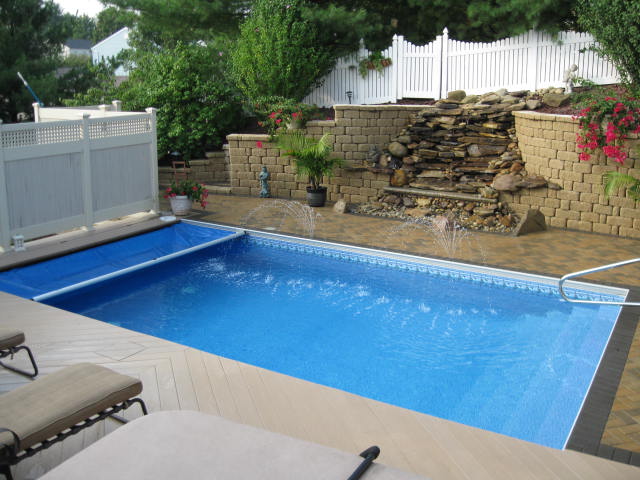


Whenever you’re not using your pool in the winter, cover it. It’ll keep it clean, and prevent heat from escaping, both of which save you time and money (lowers energy costs).
If you still plan to swim in your pool during the winter, use a solar cover. They’re easy to remove, lightweight, and quick to set up.
But if you’ll only be keeping your pool uncovered on occassion, consider a more permanent winter cover or safety cover.
Related: Quick Guide To Swimming Pool Covers
If you lose power…
If a winter storm causes you to lose power, here’s what to do to keep your pool safe:
- Remove drain plugs on the pump, heater, and filter
- Turn off the breaker (power down the pump and heater)
- Close the line valves
- Open the filter air pressure release
If you liked this post, you might also like:
7 Ways Pool Heater Maintenance Saves You Money
12 DIY Pool Cleaning & Maintenance Tips
5 Ways To Prevent Pool Water Evaporation

